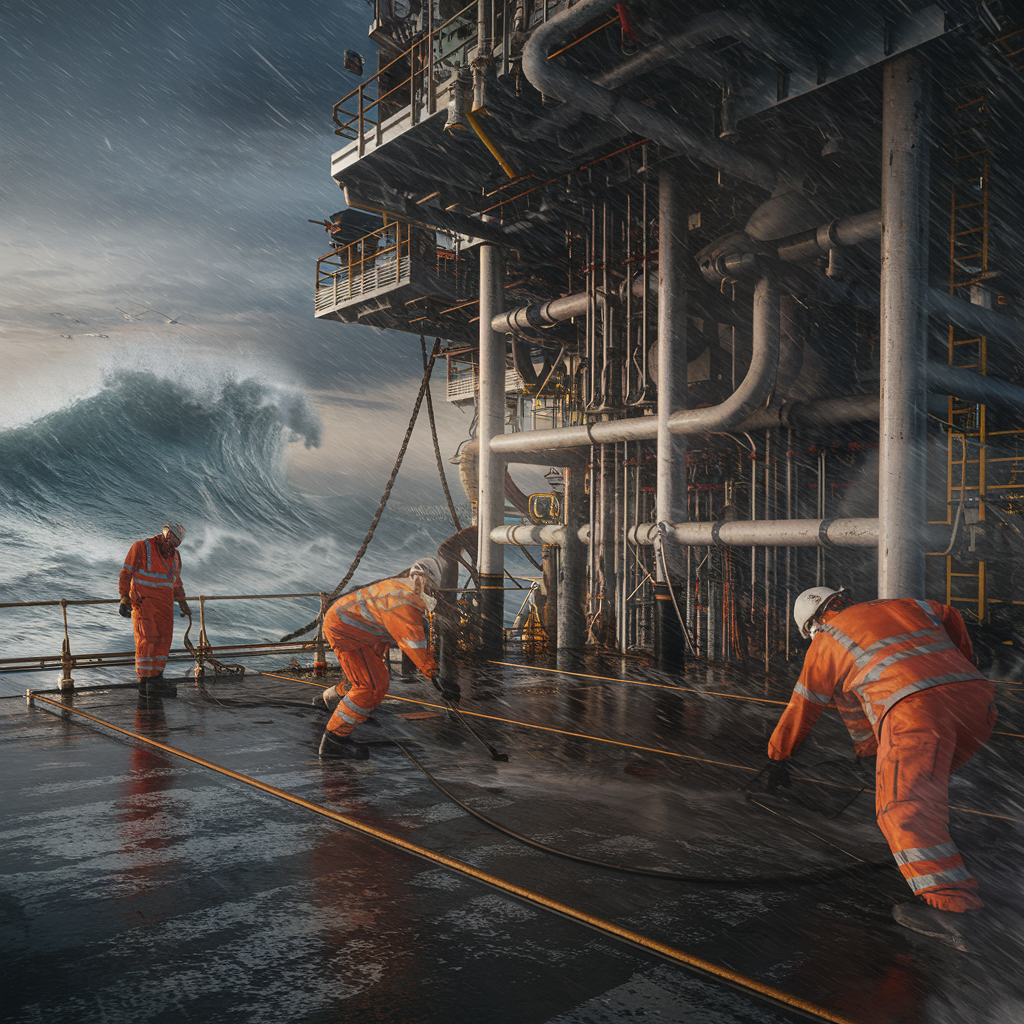The exploration and extraction of oil from beneath the ocean floor is a feat of engineering and innovation, enabling the global energy supply that fuels modern life. However, the offshore oil industry is fraught with inherent physical risks, posing significant challenges to the safety of personnel and operational sustainability. As Risk Think Tank, we understand that mitigating these risks is crucial for the success of any offshore operation. This article explores the key strategies and technologies employed to ensure safety and efficiency on offshore oil rigs.
Understanding the Landscape
Offshore oil rigs face a unique set of challenges compared to their onshore counterparts. These include harsh environmental conditions, isolation from immediate medical assistance, and complex machinery operations. The physical risks involve potential equipment failure, extreme weather conditions, fire outbreaks, and health hazards. A systematic approach to risk management is essential to mitigate these challenges effectively.
Proactive Risk Assessment
The cornerstone of successful risk mitigation on offshore oil rigs is a proactive risk assessment. This involves the identification of potential hazards, evaluation of the risks associated with these hazards, and implementation of control measures. Continuous monitoring and assessment allow for swift identification of new risks and quick adaptation of safety strategies.
Risk assessments should be comprehensive and include both quantitative and qualitative methods. Conducting regular hazard identification studies (HAZID) and hazard and operability studies (HAZOP) ensures that all possible risks are considered and addressed. The implementation of a robust risk management system enables rig operators to make informed decisions and prioritise safety.
Technological Advancements
Advancements in technology play a crucial role in reducing physical risks on offshore oil rigs. Automation and remote monitoring technologies decrease human exposure to hazardous areas. Drones, for instance, can perform inspections and maintenance at heights or in hazardous zones, reducing the risk to personnel.
Digital twins, virtual replicas of physical assets, provide real-time monitoring and predictive maintenance capabilities. By simulating different scenarios, operators can predict potential failures and address them before they occur. This not only enhances safety but also improves operational efficiency.
Wearable technology is another critical component of modern offshore safety protocols. Devices that monitor vital signs and environmental conditions can alert workers and management to potential health risks, enabling timely intervention. These wearables can also track the location of personnel, ensuring swift response in case of an emergency.
Training and Safety Culture
No amount of technology can replace the importance of a well-trained workforce and a strong safety culture. Training programs should be rigorous and continuous, encompassing emergency response procedures, equipment handling, and safety protocols. Real-life simulations and drills are invaluable in preparing workers to respond effectively to emergencies.
Fostering a safety-first attitude among all levels of the workforce is essential. Management should lead by example, prioritising safety in all decision-making processes. Encouraging open communication about safety issues and promoting a culture where all employees feel responsible for their own safety and that of their colleagues is key.
Emergency Preparedness
Despite best efforts, emergencies can and will happen. Being prepared is the final layer of defence in offshore risk management. Rig operators should have comprehensive emergency response plans that include evacuation procedures, medical response, and communication protocols. Regular drills should be conducted to ensure that all personnel are familiar with these procedures.
Operating an offshore oil rig is inherently risky, but with a systematic approach to risk management, these risks can be significantly mitigated. Proactive risk assessment, the integration of advanced technology, continuous training, and a robust safety culture are all pivotal in safeguarding the lives of those who work in one of the world’s most challenging environments.
At Risk Think Tank, we are committed to advancing the safety standards within the offshore oil industry. By staying ahead of emerging risks and technologies, we help organisations navigate the depths safely and effectively.
